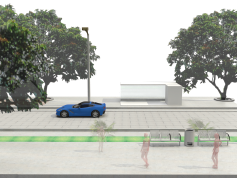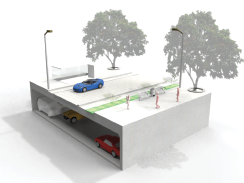New Braz Avenue
Braz de Aguiar Avenue in Belém is an iconic street in the city, known for both its uses and its history. It's a street lined with centuries-old mango trees and is notable for being the first asphalt-paved road in the city in the 1950s. Before that, the streets were paved with cobblestones. This achievement attracted high-end stores that delighted the local elite. However, the street also serves a variety of purposes. In its first block, you'll find three of the city's most traditional schools, along with a college just a few meters from institutions like the State Court of Auditors and the Metropolitan Development Company. This concentration leads to heavy traffic and disruptions both on the avenue and its side streets. Daily traffic jams are recorded, and despite some attempts by the local government to address the issue, the avenue's structure simply can't accommodate the number of cars that schools and institutions draw during rush hours. Another problem, besides the congestion, is the decline of local businesses, which have seen stores close due to security concerns and compe- tition from malls, which offer better facilities.
The proposed solution involves creating the structure to:
1 - Minimize congestion during rush hours.
2 - Provide urban infrastructure for parking, safety, and convenience to enjoy the space and local businesses.
Thus, the proposal includes creating two levels of underground boarding and disembarking areas for two of the main schools. Restricting the entry of vehicles on the upper level without allowing parking along the avenue. Customers and users will have access to the paid underground parking with nearly 800 spaces. Urban amenities will be installed on the upper part of the avenue to allow pedestrians to walk freely.
Design Team: Acilon Cavalcante, Bruno Navarro Neiva, Guilardo Lobo Jr.



